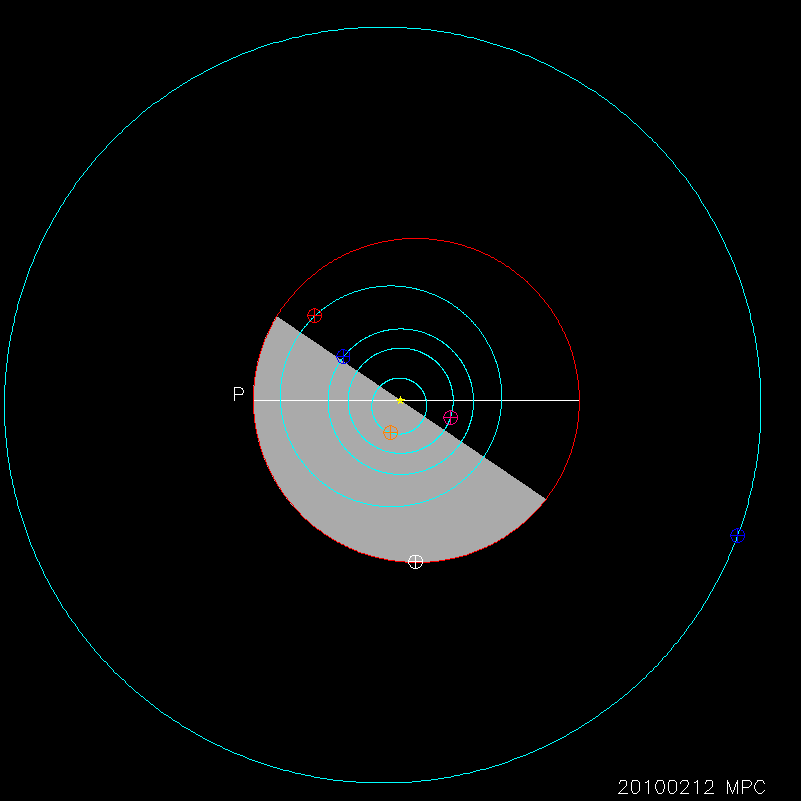(4148) McCartney
Minor planet number 4148 has been named in honor of former Beatle Paul McCartney.The citation announcing the naming appeared on Minor Planet Circular 16248 (issued on 1990 Apr. 10), from which the following is extracted with permission:
(4148) McCartney = 1983 NT
Discovered 1983 July 11 by E. Bowell at the Anderson Mesa Station of
the Lowell Observatory.
Named in honor of Paul McCartney (1942-- ), musician and ex-Beatle.
A talented composer, he was responsible for some of The Beatles' best loved
songs--both `Yesterday' and `Michelle' have become classics of the popular
repertoire, and have each been covered by several hundred artists. Paul was
instrumental in the setting up of the Apple Corps, a philanthropic
organization that helped to launch the careers of several young musicians.
Paul was the only member of The Beatles to continue regular live performances
after the group split up in 1970. He is still a popular performer,
and many of his solo recordings have topped the charts around the world.
Read about how minor planets are named.
About (4148) McCartney
(4148) McCartney is in a 3.36-year elliptical orbit around the sun ranging in distance from 303.1 million km (at perihelion, closest point to the sun) to 368.4 million km (at aphelion, furthest point from the sun).The previous perihelion passage occurred on 2009 May 2.2 UT.
The orbit is inclined by 5.2 degrees to the ecliptic plane (the plane of the earth's orbit about the sun).
There is little information on the physical properties of (4148) McCartney. Even its diameter is uncertain--a range of 8 to 18 km is probable.
You will need a telescope to see this minor planet as its maximum brightness is some 1/1886 of the brightness of the faintest objects that can be seen with the unaided eye.
The diagram below show the orbit of (4148) McCartney in relation to the major planets in the inner solar system.

This view of the inner solar system is seen from the north ecliptic pole. The sun is the yellow star at the center of the image. The blue orbits represent, in increasing distance from the center, the major planets Mercury, Venus, Earth, Mars and Jupiter. The position of each major planet at the date indicated at the bottom of the plot is shown by the large circled cross. The orbit of the minor planet is shown in red, with the location of the minor planet (at the date indicated at the bottom of the plot) shown as a white circled cross. From this vantage point the planets revolve around the sun in a counter clockwise direction. The vernal equinox is off to the right. The portion of the minor planet's orbit that is below the plane of the earth's orbit is shaded grey. The perihelion point of the minor planet's orbit is at the end of the white straight line through the sun indicated by "P".
Also available is information on provisional designations.
Where is (4148) McCartney tonight? Customisable ephemerides are available.
A CCD image showing the trailed image of (4148) McCartney is available. The image, showing a 3.2 arcminute-square region of sky, was taken on the night of 1997 Oct. 29/30 with the 2.5-m Isaac Newton telescope at La Palma and is courtesy of Alan Fitzsimmons.
Back to Rock & Roll Minor Planets
